Is your child being bullied? Are you afraid that your child might be getting bullied? How to recognize the signs of bullying in your child? How to stop bullying?
These days, bullying is the major issue that most of the parents are worried about. Parents, teachers, and children should be aware of bullying activities, anti bullying programs, which helps them to combat and prevent bullying in schools.
This article introduces what is bullying in schools? It presents the reasons for bullying, the effects of bullying, and tips to combat bullying. At the end of the article, you will find the 15 best ways to stop bullying.
What Is Bullying in School?
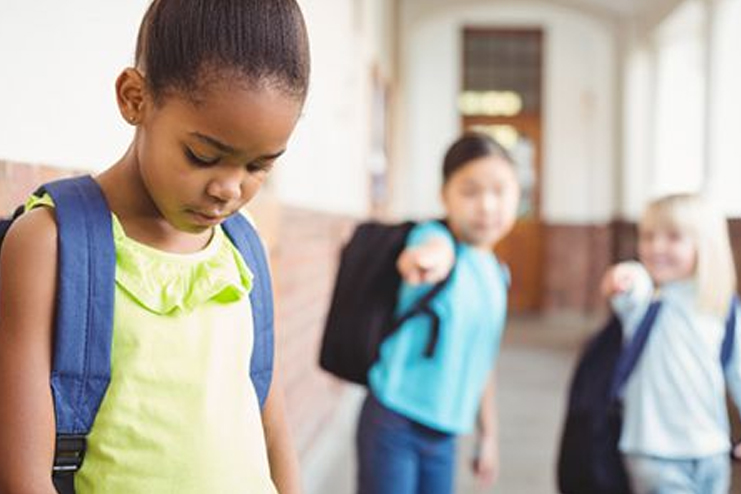
Bullying is aggressive behavior that involves hurting others physically and mentally creating a power imbalance in them. Bullying is most commonly taking place in elementary, middle and high schools. A student may be bullied by other students or by teachers in some cases.
The school setting is the major place for bullying, where children and youth live together.
The more common areas where the bullying usually takes place are cafeterias, hallways, playgrounds, lunchrooms, bus stops, school buses. Bullying occurs in the intermission periods, before and after school.
[Read: Behavioral Problems In Children]
Types of Bullying:
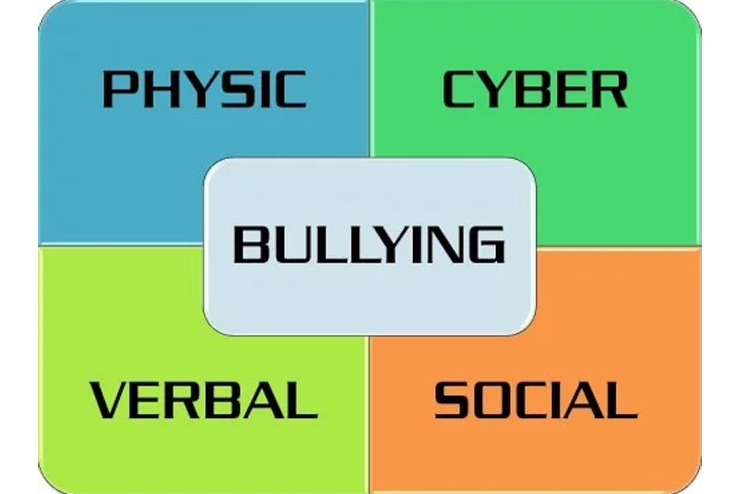
Bullying is classified into various types based on several factors.
1. Behaviour Based Bullying:
Based on behaviour bullying is classified into- Verbal, Physical and Social
a. Verbal Bullying:
Verbal Bullying involves name calling or insulting others. Generally, girls use verbal bullying as they are subtle. The main goal of verbal bullying is to dominate the victim.
b. Physical Bullying:
Physical Bullying involves physical attacks like punching, kicking, pushing, etc.
c. Social Bullying:
The intention of social bullying is to degrade the degrade somebody’s reputation or spoil their relationships.
Verbal and Physical Bullying is used as recognized as school bullying. Whereas social bullying is identified as youth bullying.
2. Setting Based Bullying:
Based on setting bullying is classified as in person and online.
a. In Person Bullying:
In person bullying includes verbal bullying, physical bullying, and social bullying.
b. Online Bullying:
It is a form of harassment using electronic communication over social media like Facebook, Email, etc by sharing abuse videos. This type of bullying is also known as cyberbullying
3. Means Based Bullying:
Based on means bullying is classified into direct and indirect.
a. Direct Bullying:
Direct Bullying mostly involves physical bullying acts like punching, kicking, beating etc. It also includes verbal bullying about weight, appearance, race, and sex.
b. Indirect Bullying:
Indirect bullying involves spreading rumors and gossips behind one’s back, aiming to ruin their reputation. This type of bullying is more prevalent among girls.
4. Visibility Based Bullying:
Based on visibility bullying is classified as overt and covert bullying.
a. Overt Bullying:
Overt bullying can be easily seen as it involves physical bullying, and verbal actions like name calling, insulting.
b. Covert Bullying:
Covert bullying is very difficult for the parents to identify. It may be in the form of hand gestures or threatening looks to prevent someone from setting somewhere or talking to someone.
5. Harm Based Bullying
Based on the way that the bullying exerts harm on a person, it is classified into physical and psychological bullying.
a. Physical Bullying:
It is same as the one explained earlier in the behaviour based bullying.
b. Psychological Bullying:
Children who are bullied frequently may experience psychological disorders. Social and covert bullying harms the child psychologically.
6. Context Based Bullying:
Based on the location where bullying takes place, it is classified as Home, Workplace, and School.
a. Home Bullying:
Bullying in a home usually takes place among siblings. It is a form of family violence.
b. Workplace Bullying:
Bullying in the workplace mostly happens among co-workers. Workplace bullying is mostly done by someone who is superior to the victim.
c. School Bullying:
School bullying takes place in educational settings like a classroom, dining room, playground, school bus by the other students. Some times teachers may also bully students.
Causes of Bullying In Schools:
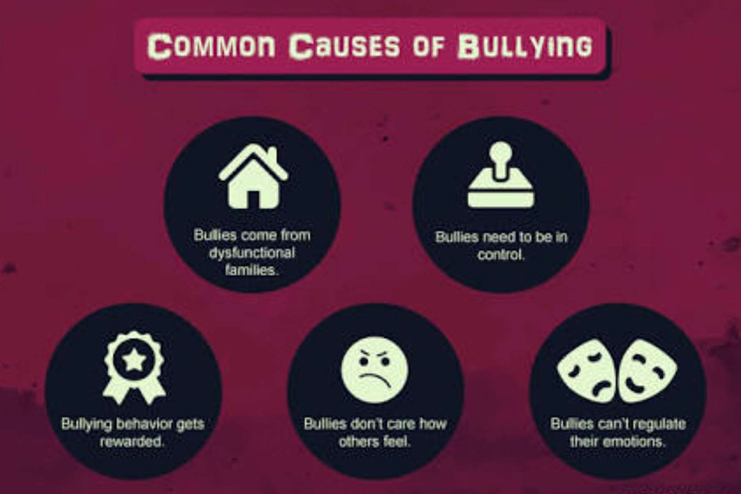
Below are the main causes of bullying.
1. Physically or Mentally Different:
Being different physically or mentally may lead to bullying. Here are some of the scenarios which make child different from others.
a. Physical Disabilities:
Deafness, visual impairment, cerebral palsy, muscular dystrophy are some of the common physical disabilities in the child.
b. Physical Appearance:
A child with skin diseases, big ears, facial disfigurements due to birth defects, disease, or wound, makes the child look different from others.
c. Learning Disabilities:
A child with attention problems or Attention-Deficit/Hyperactivity Disorder (ADHD) is more prone to bullying.
2. Different Race:
The factors that make the child be bullied racially are color, ethnicity, religious symbols, traditions or beliefs. Racial bullying is also regarded as racial discrimination.
As per the U.S. News analysis of data from the California Healthy Kids Survey, 14% of public high school students across California during the year 2017-2018 reported that they are experiencing bullying due to race.
3. Child with LGBT Parent
A child with a gay or lesbian parent may encounter social stress and finally, it may lead to bullying in schools. Gay parents and their children experience social and emotional problems. This type of bullying is known as homophobic bullying.
Homophobic bullying involves calling names, spreading rumors, sexual abuse.
Apart from the above listed causes- children who are outstanding in studies or sports can be a target of bullying.
Why Do Children Bully Others:
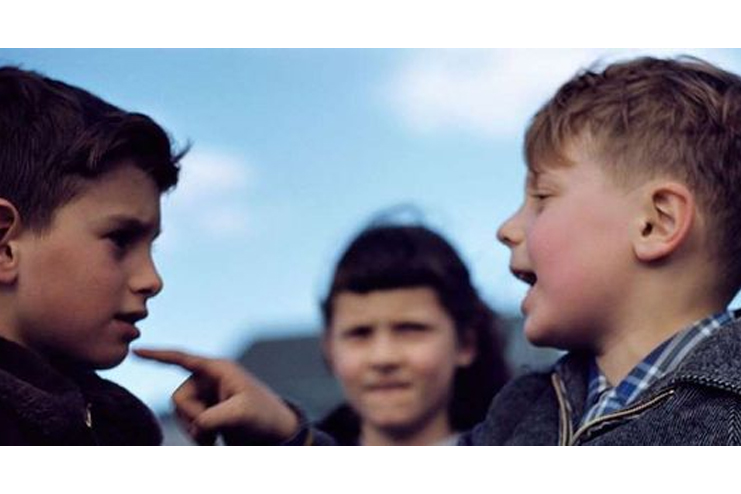
Here are some of the few reasons which turned out children into bullies.
- Always parents behaviour will have a great impact on their child’s development. If parents lose attention towards their children, there is a possibility that they may become bullies.
- Some parents are very aggressive with their children, this resulting in their children too to become bullies at school.
- Some children feel that bullying is a way to defend themselves against harm and to prove that they are strong.
Effects of Bullying in Schools:
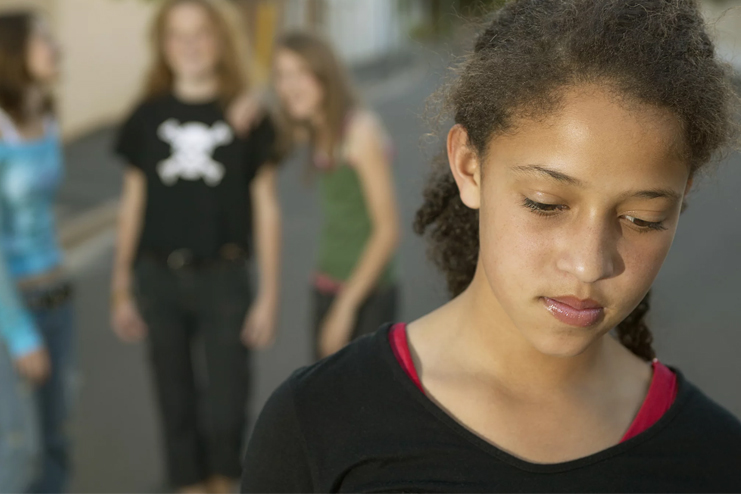
Bullying may affect anyone- those who are bullied, who bullies, a witness of bullying.
a. Effects on children Who are Bullied:
A bullied child may experience negative physical and mental health issues. It can make them feel lonely, frightened, and alone. Children may exhibit decreased academic achievement.
If bullied students are not paid attention to by the parents and teachers, they may also become bullies. The Safe Schools Initiative Report suggested that 71 % of the attackers are the victims of the bullying.
b. Effects on Children Who Bully Others:
Children who bully others may involve risky behaviors in adulthood. Those who bully others may likely to habituated to alcohol, and drugs in an adolescent. These children are vulnerable to drop out of school.
If bullied children are not given proper counseling, they may grow up with abusive behaviour.
c. Effects on Children Who Witness Bullying:
Bullying witnesses experience anxiety, a feeling of insecurity which makes them to skip school.
How to Stop Bullying in Schools?
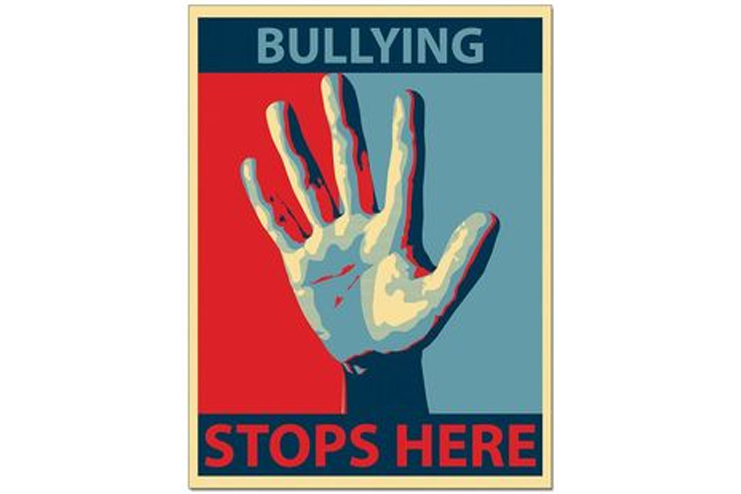
In order to prevent and stop bullying in schools, Parents and teachers should pay attention in planning and organizing the anti bullying methods.
What Parents Can Do To Stop Bullying In Schools:
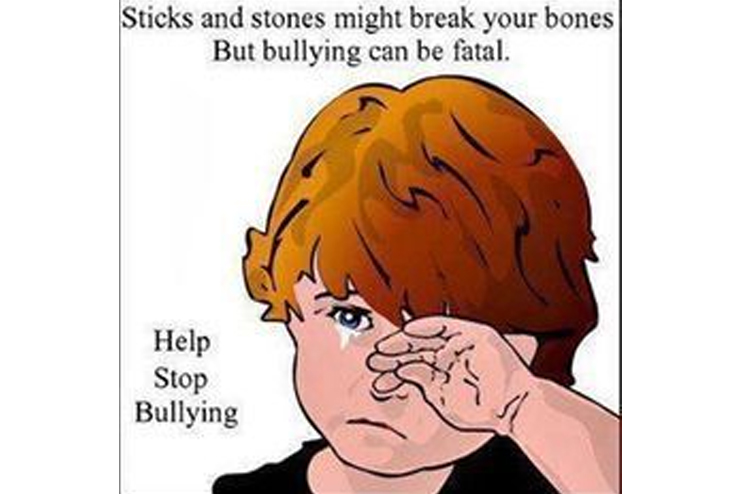
Parents should keep track of their children’s attitudes in order to recognize any serious incidents like bullying, which require immediate attention. Bullied children may regret to report their parents. Because they think that admitting themselves as the victim might disappoint their parents. A bullied child may exhibit changes in mood, behaviour and physical appearance.
Here are the 10 most important ways to recognize and stop bullying
1. Recognize Signs of Bullying:
The following are the best signs to recognize that your child is being bullied.
a. Bruises:
A bruise is a common skin injury which causes small blood cells to burst and blood gets trapped below the skin’s surface, resulting in a black or blue mark.
b. Missing or damaged belongings:
Missing or broken/torn belongings such as stationary, electronic things like watches. Question your children the reason for the damaged/missing things. If you feel that your child is hiding the truth, then speak with your child for the confirmation and take necessary action.
c. Becoming Isolated:
If your child is not speaking to you/spending more time alone. It may be a sign of bullying.
d. Aggressive at Home:
If you notice any changes in your child’s behaviour like turning out very aggressive over small things, then pay attention to them.
Apart from the above mentioned behaviors, some others include:
Regretting to go to school, sleep disorders, health disorders like headaches or stomach aches, suddenly performing less in studies.
2. Learn What is Bullying:
In order to stop bullying, parents should clearly understand the definition of bullying. The three main characteristics of bullying are
Deliberate: Intention to hurt someone
Repeated: Bullying is frequent
Power Imbalance: The bully chooses a victim who is recognized as vulnerable.
These three characteristics are strong enough to label an aggressive action as bullying. It is most important to recognize whether the situation is bullying or something else.
The following incidents are not considered bullying
- Hate/dislike someone
- Being excluded
- Accidentally run into someone
- Telling joke about someone once
- Arguments
3. Talk about Bullying:
Make your children know what bullying is? How to combat bullying?
Here are the few sources to make the children understand bullying.
a. For Preschool Children:
- llama and the bully goat by Anna Dewdney
- The Bully Blockers Club by Teresa Bateman
b. For Elementary School Children:
- The Hundred Dresses by Eleanor Estes
- Anger Tree by John Cary
c. For Middle/ High School Children:
- Bully by Patricia Polacco
- Wonder by R.J. Palacio
These books will help children to withstand bullying and handle it in a safe way.
4. Know the Rights of Your Child:
If your child has a disability or any food allergy, then know the rights that are included in IEP to protect children with disabilities against bullying.
Bullying may cross the limit and become disability harassment, which is prohibited under the Americans with Disabilities Act of 1990.
5. Be aware of Your Child’s Online Interaction:
These days, children are more familiar with the online activities like gaming, communication over social media. Pre-teen and mid-teen children are more prone to cyberbullying. At this age, they have very less understanding of good and bad.
As parents, it is your responsibility to track all the online activities that your child engages in. Make sure that your child has less interaction with social media and most engaged with offline activities.
6. Teach Your Child Safety Approaches
Teach your child how to combat bullying. Teach your child how to walk away instead of hitting back. Make your well trained on how to report the bullying to the teachers or adults in a clear manner. Brainstorm your child with the activities that help them to avoid further victimization.
7. Teach Your Child Social Skills:
Social skills in children and teenagers will help to withstand and face any situation with confidence. The important social skills which are required for every child are
Understanding the difference between right and wrong
- Cooperation
- Being a friend
- Sharing
- Helping others
- Following directions
- Making eye contact
- Using manners
Here are the few activities to teach your child social skills
a. Read Fiction Stories:
Read to your child fiction stories which helps them to develop empathy.
b. Model Good Behaviour:
Children learn by observing the people around them, especially their parents. Behave very politely in front of your children and make them to learn.
c. Emotional Charades:
Emotional charades is a fun game which makes the children understand how emotions look like. It will give them the ability to communicate effectively by expressing their feelings.
How To Play:
- Write down a variety of emotions on a piece of paper like happy, sad, surprise, etc
- Place the slips in a container
- Let them pick out a slip and act the emotion in that slip
8. Stimulate Positive Relationship:
Apart from parents or caregivers, there are some other relationships like friends, adults, that keeps your children safe from bullying. Open opportunities like playtime or visit, which helps them to nurture supportive relationships.
Maintain frequent touch with your child’s teachers. A strong network of friends and adults may help your child less prone to bullying.
9. Restore Confidence
Bullying may destroy a child’s self confidence. Promote them positive behaviour to accept failure and success equally. Let them figure out their own problems and teach them how to combat difficult situations.
Never express your parental worries, which may impact their confidence levels.
10. Prepare Your Child to Become Helpful Bystander:
If your children witness bullying situations, teach them what to do? Many children won’t act as a helpful bystander because of many reasons like afraid, confused, unsure of what to do.
Teach your child that he/she can stop bullying in adult leadership.
What schools Can Do to Stop Bullying:
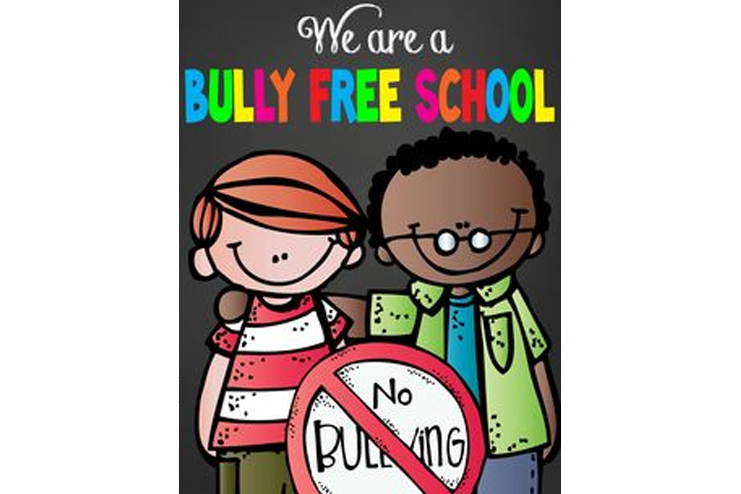
Bullying has become a widespread problem, especially in school settings. It is the responsibility of schools to stop bullying and create a healthy, safe, and learning environment.
Here are the 5 best solutions that the schools should do to stop bullying
1. Install Security Cameras in School Premises:
Physical and Verbal bullying can be easily stooped if there are security cameras. For many bullies, knowing that there is a potential to record their actions is enough to prevent them from what they are doing. Schools should make sure to install security cameras at all the bullying prone areas like a classroom, school buses, school canteen, hallways, playground, etc.
Video surveillance helps schools to notice and take action on bullying without student reports.
2. Make Strict Anti Bullying Policies:
Anti Bullying Policies will help to prevent bullying. Schools should be able to make bullies afraid of strict anti bullying policies. School authorities should take care of posting anti-bullying posters, slogans, punishments for disobedience in school premises.
3. Anti Bullying Activities:
As a part of the curriculum, students should know and understand bullying activities. They should be taught about the bad consequences of the bullying and benefits of positive communication. This will help to create a friendly environment where bullying is less likely to occur. Anti-bullying activities will help students to combat bullying.
4. Bullying Prevention Programs:
Educate school staff and children on bullying situations to make the school bullying free zone. Empower bystanders, educate the students on the importance of reporting the bullying. Involve the students by rewarding the good bystanders and the students who report bullying.
Bullying prevention requires friendly interaction between the teachers and the students. So that the teachers may find out the problems of their students and find the best solution to resolve them.
5. Counselling:
Schools should make the counselling available to the children bullied, to the bullies, and for those who help bullies. It may help in the prevention of bullying.
Bullying along with many other factors like depression, trauma history may lead to suicide. Parents and teachers should support the bullied children and stop bullying with the above mentioned 15 ways to stop bullying.








































